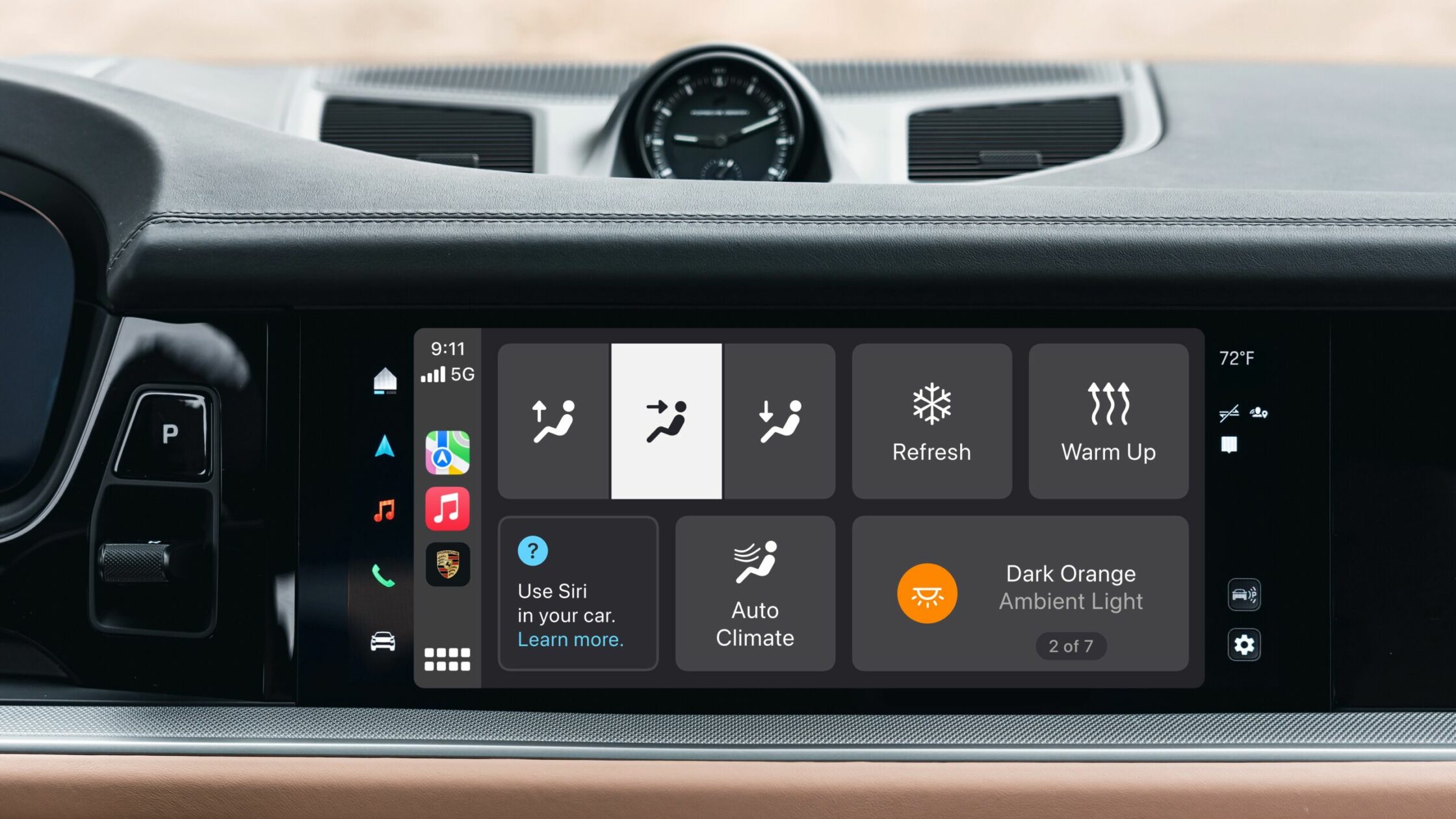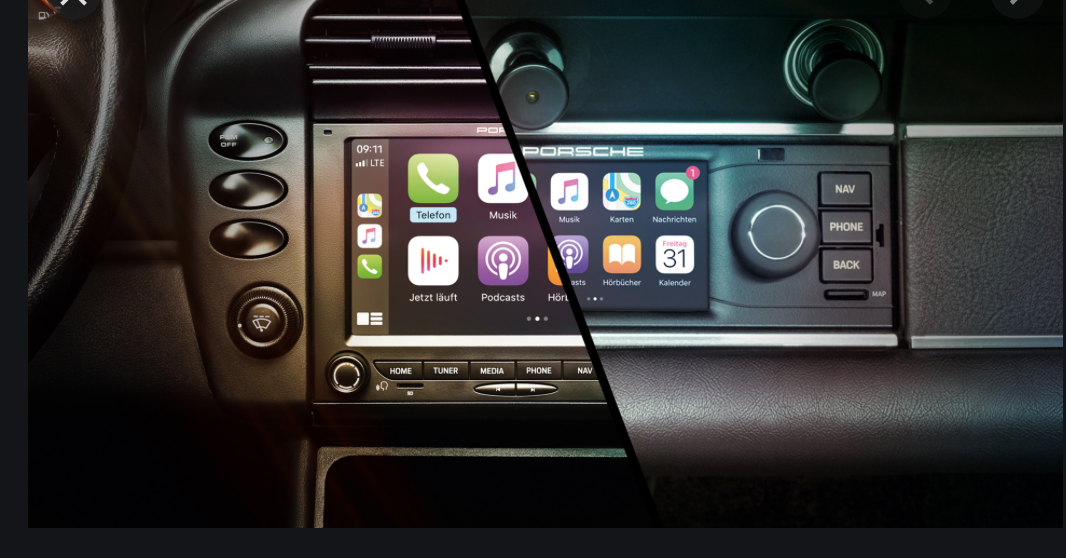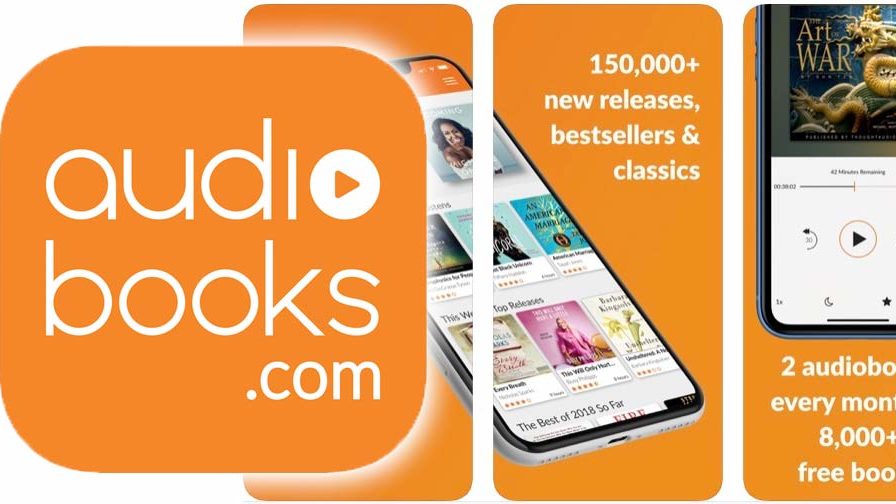In 2016, the introduction of Apple CarPlay marked a significant turning point. Prior to that, connecting your smartphone to your vehicle often involved the hassle of dealing with Bluetooth connections. If you wished to utilize a navigation app on your smartphone, you typically needed some form of phone mount attached to an air vent or suctioned onto the dashboard. The ability to seamlessly mirror your phone’s screen on the car’s infotainment system proved to be immensely popular. By 2020, nearly half of all new car buyers were seeking this feature.
However, this shift didn’t sit well with every automaker. In March of the current year, General Motors garnered attention and sparked discussions when it announced the discontinuation of support for screen mirroring interfaces, including CarPlay and Android Auto, in its upcoming products. While GM perceived this as a challenge, Porsche saw it as an opportunity. Consequently, Porsche has developed a new iOS app, leveraging an Automaker toolkit provided by Apple. This relatively obscure feature is exclusively offered to original equipment manufacturers (OEMs), granting them greater flexibility beyond the confines of Apple’s strict user interface guidelines.
Porsche conducted customer research, revealing that the vast majority of its clientele own iPhones and prefer to use them for tasks like navigation. Porsche elaborated on this by noting that while some functions, such as media control and specific climate adjustments, necessitate switching back and forth between the phone and the car’s interface, customer feedback indicated dissatisfaction with this inconvenience.
Porsche has introduced an updated version of their My Porsche App, which is now compatible with CarPlay, specifically designed for the 2024 Porsche Cayenne. This marks the first Porsche model to support this feature. Within the app, users can customize a series of tiles on the screen, allowing them to conveniently manage climate settings, switch between favorite radio stations (AM, FM, and Sirius XM), or adjust interior lighting. Additionally, the My Porsche App seamlessly integrates with Apple Maps, enabling users to create favorite locations or conduct local searches, such as finding nearby coffee shops. Furthermore, the app offers Siri integration for added convenience.
To establish a connection between the iPhone and the car, a unique QR code is used, granting secure access to Porsche’s cloud services. However, Porsche has implemented certain limitations on the app’s capabilities, ensuring it cannot interact with critical components like the engine, brakes, or steering.
Interestingly, Porsche had the option to mimic their native infotainment system’s appearance with the Automaker toolkit but chose a different route.
“We had discussions about whether to use the Porsche font or the San Francisco font,” explained Porsche Digital‘s Cyril Dorsaz. “Ultimately, we opted for the San Francisco font, as it aligns with the familiar user interface of other Apple devices. Our aim is to provide a seamless experience for customers, both inside and outside the car. Customers are already familiar with the Apple ecosystem’s UI/UX on devices like the iPhone, iPad, MacOS, and Apple Watch, which is why they appreciate Apple CarPlay. Thus, we decided to go with this familiar Apple user interface.”
While the 2024 Porsche Cayenne is the first model to support the CarPlay version of the My Porsche App, Porsche plans to include support for this feature in new models as they become available. However, the compatibility for older Porsche vehicles remains uncertain.
“We have not fully assessed the requirements to enable this feature on older cars,” Dorsaz noted. Unfortunately, Android Auto does not have an equivalent automaker toolkit, and the relatively low prevalence of Android usage among Porsche customers means there is no Android equivalent at this time.”


